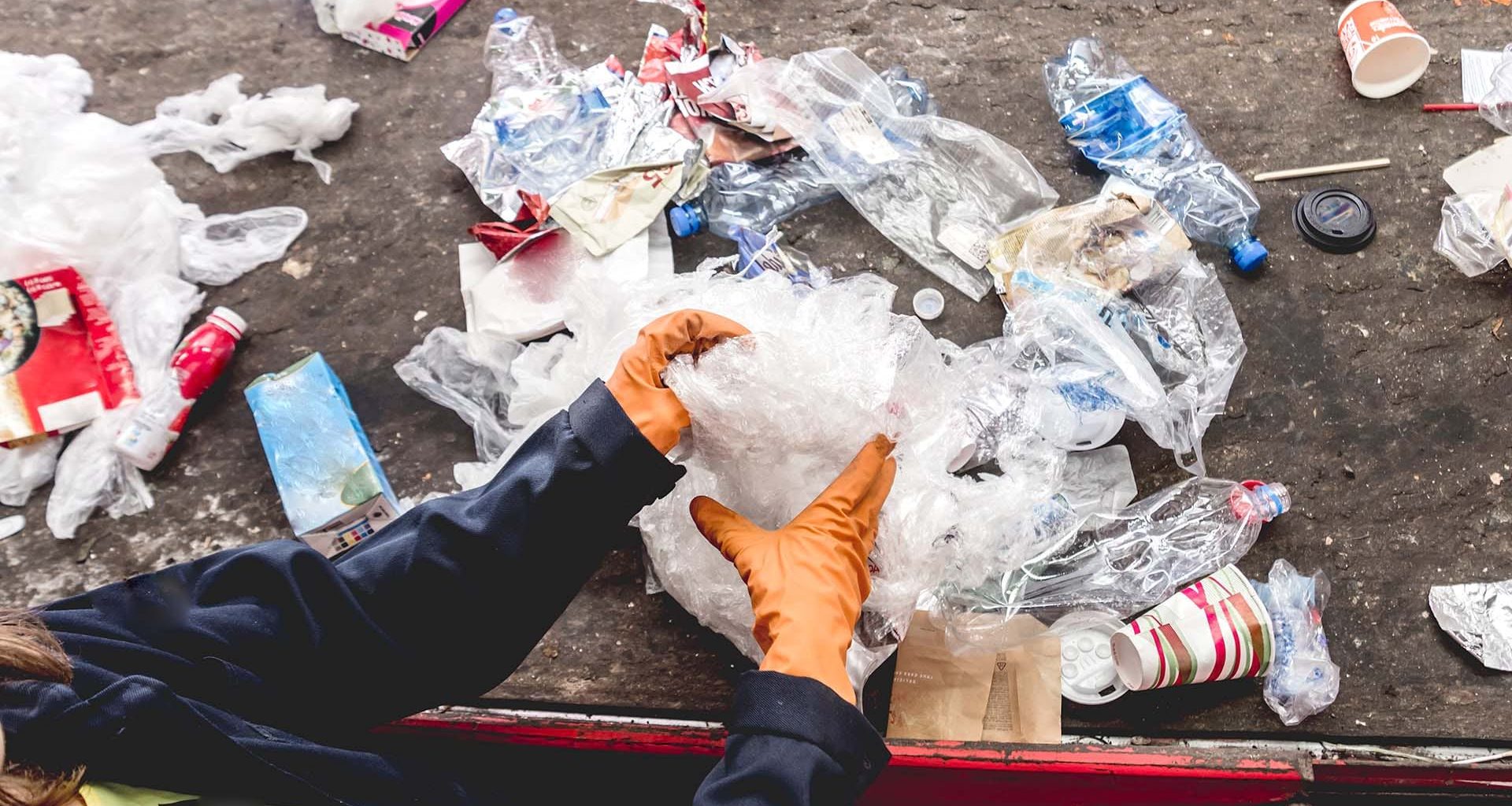Lawmakers in the nation’s most populous state took a major step in improving a confusing plastic labeling system. On September 9, 2021, the California Legislature passed the “Truth in Labeling for Recyclable Materials” bill (SB 343), which Governor Gavin Newsom signed into law on October 6.
Plastic Identification, Not Plastic Recycling
The law attempts to clear up the confusion around the ubiquitous “chasing arrows” symbol. Stamped on the bottom of most plastic containers, the chasing arrows surround a number that refers to a Resin Identification Code. The Society of the Plastics Industry, now the Plastics Industry Association, introduced these codes in 1998 to help local municipalities sort the multitude of plastics coming into facilities each day.
As a system, it sounds reasonable, but there’s a catch. The codes do not indicate recyclability, only identification. Most plastic materials are not recyclable under current conditions in California facilities, as well as most states. The plastics industry, however, wants consumers to believe that the codes communicate plastic recycling. According to the Federal Trade Commission, manufacturers and companies can stamp the codes “in an inconspicuous location” even if “it would not constitute a recyclable claim.”
How SB 343 Will Improve Plastic Recycling
State legislators passed this law to reduce the amount of plastic waste contaminating the recycling stream. When they see the chasing arrows Resin Identification Codes, consumers unknowingly throw non-recyclable plastic containers into the single-stream bins. Workers at recycling facilities separate these containers, a tedious process that leads to unnecessary costs. Ultimately, facilities incinerate the non-recyclable containers or send them to the landfill to slowly decompose and pollute the soil.
SB 343 holds the plastics industry accountable. According to the bill’s sponsor Senator Bob Allen, “This is ultimately a truth-in-advertising concept. So many of the materials that people put into their blue bins thinking they’re recyclable—they’re not recycled. Consumers ought to be able to trust the labels.”
The bill does not suggest a new labeling system. Instead, it prohibits the use of resin codes when the material is not actually recyclable. CalRecycle (California Department of Resources Recycling and Recovery) has until January 1, 2024 to set criteria on what is and is not recyclable. According to the Senate Floor Analyses, manufacturers could still label PET #1 and HDPE #2 plastic bottles and jugs because California recycles these containers at high levels. That means plastics #3-7 will not be labeled with their resin codes.
The Plastics Industry Reacts
As they have for the past three decades, the plastics industry claims that the codes were never intended for recyclability. It’s a flimsy argument from an industry that relies on petroleum and endless consumption. Surprisingly, California lawmakers did not buckle like they have in the past. According to 2017-18 state financial records, the Plastics Industry Association and Dart, one of the largest polystyrene and single-use plastics producers, spent over 4 million dollars in lobbying and campaign contributions in California alone. SoCal Connected discovered that “some of that was on dinners and lunches with elected officials, who then helped kill a bill that would have restricted foam.”
When the bill goes into effect, manufacturers will have to follow California and national regulations. In a response to the bill, the Plastics Industry Association claims that more plastic will end-up in landfills. They also claim, without evidence, that items like yogurt cups and microwavable trays “are not only recyclable but are currently recycled in California.”
While these items are recyclable, they are largely not getting recycled. “Almost anything could be recycled, if there is a market for it,” says Amy Hammes, a recycling specialist at the Burbank Recycling Center. After it is sorted, the United States sent most of their plastic to Southeast Asia, until China announced in 2018 that they would stop accepting it. The market dried up and the plastic became worthless. The plastic must go somewhere, so now we bury it in landfills.

When California Leads, the Nation Follows
Experts and advocates hope SB 343 becomes a model for state and local governments across the nation. Due to its large population and economy, the Golden State has a major influence on the rest of the U.S. When California set vehicle fuel-efficiency standards, automakers adhered to these standards and produced one type of automobile rather than two.
California lawmakers have additional recycling bills in the works, and similar bills in New York and Oregon are being considered or have already been passed.
If you want to know more about Zenpack’s services
Let our packaging consultants help you turn your idea into reality.


